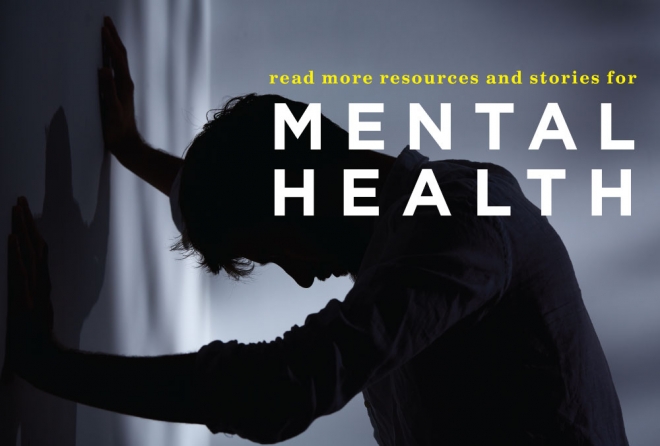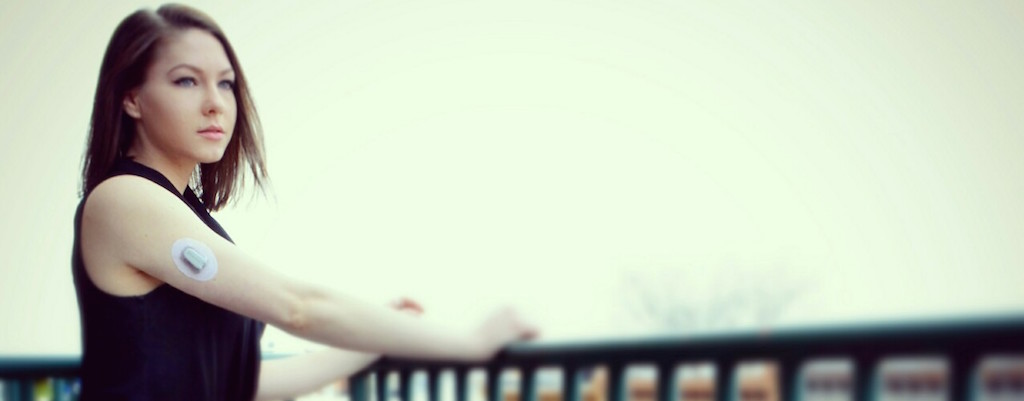Seeing Clearly: Diabetes Burnout
Trigger warning: this post is a personal account that includes content relating to suicidality and mental health.

I was diagnosed with type 1 diabetes in 1991 when I was just 1 year old. No prior family history could’ve prepared my parents for such a diagnosis, and fate would have it that I remained alone in that experience for a large portion of my life; none of my three brothers, other family members, friends, or even acquaintances ever developed type 1 diabetes.
Growing up in a small hometown, I was shaped and defined by the fact that I was “the girl with diabetes.” I got my first taste of what that meant at age 6, when my enrollment in public school was denied because I “required too much medical attention.” As I was the first type 1 diabetic in the school district, the nurses and teachers had no experience managing blood sugars or insulin injections, and therefore felt it was best to place me in special needs classes. My parents were outraged and immediately petitioned the school board to reconsider. While they were ultimately successful, they went to great lengths to educate the school staff, who—though they meant well—vacillated between treating me like a ticking time bomb or a frail, sick little girl.
As a result of these circumstances, I was always aware of the ways in which I differed from other children. On birthdays, kids would bring a “special treat for Samantha”—usually fruit—while everyone else ate cake or cupcakes. At lunch time, classmates would fight over who would get to walk me to the nurse so I could test my blood sugar (a protocol that developed out of the misconstrued fear that I could faint at any moment.) Even though I was the only child with type 1 diabetes in my elementary school, I somehow related to my peers with food allergies and the like who also required special snacks and trips to the nurse.
It wasn’t until junior high, however, that I realized I wasn’t like those other kids at all; that my issues put me in a category all my own, one that was not desirable, cool, or acceptable. This realization was echoed by the little boy in my 6th grade class who refused to sit next to me because he didn’t want to “catch diabetes,” and amplified by my general preteen angst and the pressure to fit in. At age 11, I decided I didn’t want to be “the girl with diabetes” anymore. I didn’t want special treats or extra attention. I didn’t want the injections or blood sugar spikes. I just wanted to be like all the other children. So I decided to act accordingly.
The word “diabetes” was promptly removed from my vocabulary. I lied about blood sugar readings and gave insulin surreptitiously in bathroom stalls or, more often, not at all. In addition to worrying about the typical minutiae of teenage life—clothes, boys, popularity—I also had to plot how I was going to evade the school nurse that day or trick my teacher into thinking I didn’t need to bolus for the candy at the Halloween party. In my mind, living openly with type 1 diabetes (T1D) was not akin to being popular or accepted. Of course, my parents and doctors tried to intervene as my A1c crept higher and it became clear I wasn’t taking care of myself, but there was only so much they could do as I got older and became more adept at lying.
By the time I reached high school, my blood sugars were constantly in the 400s and 500s. I was angry all the time; angry at the school nurse for her attempts to keep tabs on me; angry at my friends for being able to live lives that didn’t involve needles or finger pricks; angry at my parents for their incessant worrying; angry that I was the only one with diabetes; angry that no one actually understood what I was going through. Most of all, I was angry with my body, and I desperately wanted retribution.
At age 14, my lowest point, I attempted to commit suicide by injecting over 200 units of fast-acting insulin at once. I was so desperate to escape the life sentence of this disease and felt so hopeless and alone that this drastic measure seemed like my only option.
Though I didn’t try again, I remained depressed for the rest of high school and continued to neglect my health. At age 18, after a physical exam required to attend college, I was told that I had signs of early stage kidney failure. In stark contrast to the devastation this news triggered in my family, I was indignant. To acknowledge that I had kidney damage was to acknowledge that I have type 1 diabetes, and therefore accept all the responsibility, stigma and frustration that accompanied it. I was unwilling to do that. So I continued to deny myself insulin, not test my blood sugar and live as if I didn’t have a chronic, incurable disease; until shortly after my 22nd birthday.
After over a decade of living daily with extremely high blood sugars, the fine blood vessels in my eyes began to rupture and bleed from the inside. In the span of a few weeks, I went completely blind in my left eye. I was terrified. Diabetes had always been this invisible oppression in my life and—for that very reason—I was able to ignore it. Yet the consequences of my hiding were now literally in plain sight; I could see nothing else but the impact of my neglect. After living in denial for so many years, I suddenly had to decide between facing the reality of a life with type 1 diabetes or going blind. I knew I had to do something, but what, I didn’t know.
I didn’t have an eye doctor or even a regular endocrinologist. My blood sugars were always so high that suddenly bringing them down into a healthy range would have left me feeling comatose. Even then, the damage had clearly already been done. I’d backed myself into a corner with no tools, no options and no support. Desperate, I did something completely out of character, something I’d been obstinately avoiding since I was 11-years-old: I asked for help.
I contacted my local JDRF chapter, the only organization I knew of at the time that was dedicated solely to type 1 diabetes, and explained what was happening. Immediately, I was put in touch with dozens of people who not only understood what I was going through, but wanted to help me through it. I was given recommendations for doctors, information on new technology and treatment options and more than anything, overwhelming sympathy and support. I’d gone my entire life living alone with this disease, not realizing—or perhaps not willing to accept—that there was an entire community of people with type 1 diabetes out there who also felt the anger, sadness and unfairness I felt, but who were striving to live healthy, normal lives in spite of having T1D.
With the support of this new community and a fresh team of doctors, I began the process of getting my blood sugars under control and treating my complications. Simultaneously, I began attending type 1 diabetes support groups, which was extraordinarily healing, and helped me to overcome the shame and regret I was feeling. To my surprise, one of the JDRF employees moderating these groups was moved by my story and asked if I’d be willing to speak at their annual Gala. I agreed, and a few months later—still partially blind in one eye—I stood in front of 600 people and shared the impact type 1 diabetes had had on my life. After I finished my speech, someone in the audience donated $50,000 for type 1 diabetes research in my honor, and I received an outpouring of encouragement through letters and e-mails following the event.

Over the next two years, I worked hard to relearn how to live healthily with T1D. I began continuous glucose monitor (CGM) therapy, changed my diet and switched pumps. I also underwent two eye surgeries to restore my vision. I’d made so many new type 1 diabetic friends through the support groups I was attending and heard such inspiring stories from other members of the community that I decided I wanted to start volunteering my time as a mentor for newly-diagnosed individuals and families. Eventually, I quit my job in the publishing industry and began working full time as a fundraiser for JDRF.
Developing diabetic complications was the scariest ordeal I’ve ever been through. Yet surviving them ultimately changed the course of my life. They uncovered a miraculous strength inside of me that I didn’t know I had; a strength that will surely sustain me through any other unexpected hardship life might throw at me. Moreover, they exposed me to the strength of the type 1 diabetic community—a community that welcomed me with open arms and didn’t think I was a bad person or “bad diabetic” for not taking care of myself. I will forever be indebted to these people for helping to heal me, both physically and emotionally.
My career and life are now dedicated to fostering this community. Every day I work to connect others struggling with type 1 diabetes to people and families just like them—just like us!—so they can hear and impart shared experiences and wisdom, and realize the truth I wish I’d realized so much sooner in my life with type 1 diabetes, the truth that would have made all the difference: You are not alone.
*I’d like to dedicate this story to my amazing mother, Marci. I would not be here today, happy and healthy, if it wasn’t for your unwavering support and unconditional love.
For more by Samantha Willner, read “A Tale of a Type 1 Diabetic in Turkey” (it’s pretty humorous!) or the tender “To the Parents of Children with Type 1.“






